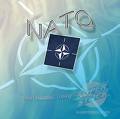The Ground War has Commenced: NATO Establishes a “Joint Operation Room” with the Libyan Rebels
Weapons are being supplied to the rebels under NATO supervision

Mustafa Abdul Jalil, who less than two months ago was Moammar Gadhafi’s minister of justice, is now on an official visit to Rome where, in his position as the president of the Libyan National Transition Council he is meeting with Foreign Minister Franco Frattini and Prime Minister Silvio Berlusconi, and is being received by President of the Republic Giorgio Napolitano. What Jalil finds most important is what Frattini promised him at the recent meeting of the “Contact Group” in Doha: “Weapons but not only weapons, also communication equipment allowing the interception of the Libyan government’s radio communications.”
Gen. Abdul Fattah Younes, head of a tribe of Cyrenaica who until two months ago was Gadhafi’s interior minister and now is chief of the anti-Gadhafi forces, said in an interview with Al Arabiya that his forces “are getting weapons,” though he did not specify from whom. That information came from the emir of Qatar, Sheik Hamad bin Khalifa al-Thani, who said on CNN that he had sent arms supplies to the rebels. In the last days many containers labeled “Humanitarian Aid” have arrived in Bengazi from Qatar. The New York Times points out that Qatar, along with Italy and France, has already recognized the Council of Bengazi as the “legitimate government of Libya.” The vice-chairman of the Council of Bengazi, Abdul Hafidh Ghoga, said he had asked for foreign instructors in the use of weapons, and spokesperson Mustafa Gheriani specified that they had opened “centers of professional training.”
In a press conference in Bengazi on Saturday, April 16, Ghoga also stated that “NATO forces and the Libyan rebels established a joint operations room” to coordinate ground operations with air strikes conducted by NATO.
From March 31 to the present (April 19) the command of the allied joint force, whose headquarters is in Naples, has made more than 3,000 air strikes in Libya, an average of 150 a day. The attacks are carried out about half by French and British fighter-bombers with the rest by aircraft from Belgium, Denmark, Norway and Canada. A quarter of the raids are carried out by U.S. planes, whose task is mainly to identify the targets and disrupt enemy telecommunications.
At this point, however, writes the Washington Post, “the limits of European NATO countries for supporting military action is relatively small over an extended period”: there are few laser-guided bombs, and French and British airplanes cannot use those from the U.S. Pentagon officials expect therefore that U.S. aircraft will be called on again for bombings, including A-10 Thunderbolt and AC-130 Specter, whose guns fire thousands of rounds per minute (for the most part, made up of depleted uranium). And contradicting the “reluctance” of the Italian government to provide aircraft used for bombing, a senior U.S. official, quoted in the Washington Post, says: “It is likely that Italy will provide aircraft to support ground attack missions.”
il manifesto, April 19, 2011. Translated from the Italian by John Catalinotto

